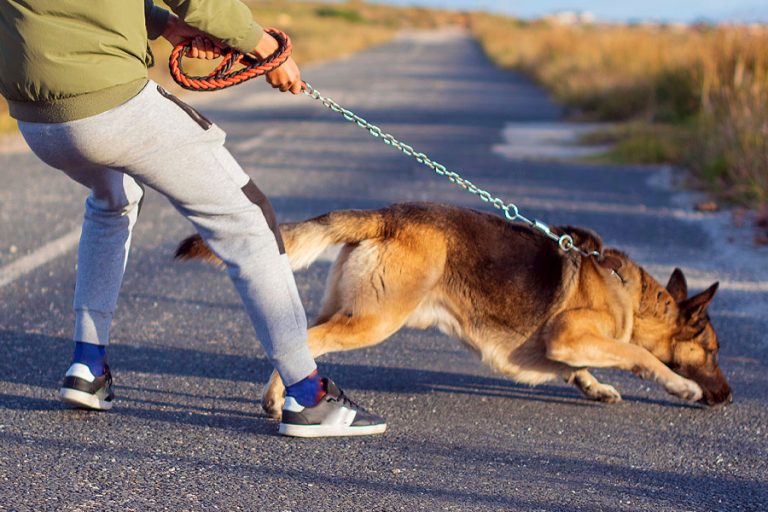Puppy dog training is the first step toward building a calm, confident, and communicative relationship with your dog.
The American Society for the Prevention of Cruelty to Animals reports that behavior issues are a leading cause of dog relinquishment. That fact alone reminds us that training is not about control—it is about understanding and structure.
We believe early obedience work is more than just learning commands. It is about setting expectations, creating consistency, and reducing stress for both the dog and the family. When we teach a young dog how to respond to cues, follow patterns, and focus their energy, we are shaping behavior that lasts for years.
Choosing the Right Dog Training Tools and Equipment
Dog training tools and equipment serve a clear purpose—they help us communicate more effectively with our dogs.
Each item in our toolkit plays a specific role. A basic leash keeps movement in check. A harness provides support without strain. A treat pouch keeps rewards within reach. These are not accessories. They are essential aids that make instruction clear and timely.
We match tools to temperament. A sensitive dog may respond better to visual markers. A high-energy pup might need a front-clip harness to discourage pulling. The right tool supports our message and reduces confusion during training.
It is not about using every product on the shelf. It is about choosing tools that guide calmly and reinforce the behavior we expect. Consistency, not complexity, brings results.
Read more How to Train Your Dog at Home Without Hiring a Professional
How to Train Your Dog at Home Successfully
Train your dog at home by turning everyday moments into learning opportunities. No special location is required—just attention, repetition, and consistency.
We begin by establishing routines. Morning walks become leash lessons. Mealtimes become practice for impulse control. Play sessions offer chances to reinforce boundaries. When training is part of daily life, progress becomes natural.
The key is clarity. Use short commands. Reward promptly. Redirect gently when things go off track. Dogs learn through pattern and tone, not volume or repetition alone.
We treat home training as a partnership. The more engaged we are, the more responsive the dog becomes. And when both sides understand their role, the process feels less like a task and more like communication.
When to Work with a Certified Dog Trainer
A certified dog trainer brings structured insight into situations where guidance at home reaches its limits. Some behavior patterns require professional evaluation and targeted correction.
We often recognize the signs. Repeated aggression, persistent fear responses, or a lack of progress despite consistent effort. These are not failures. They are indicators that outside perspective is needed.
Working with a certified professional means stepping into a process built on experience. Trainers observe patterns we may overlook. They offer precise strategies, adjust techniques, and build step-by-step plans that produce results.
We remain involved throughout the process. The trainer does not replace our role—they strengthen it. With support, we become more effective leaders for our dogs.
Understanding the Value of Behavioral Dog Training
Behavioral dog training addresses the emotional triggers behind unwanted actions. It goes deeper than commands—it focuses on why the behavior is happening.
We often notice the symptoms first. Barking at strangers. Guarding food. Refusing to come when called. These are not signs of a stubborn dog. They are messages shaped by stress, confusion, or unmet needs.
In this form of training, the goal is not to suppress behavior but to reshape it. We use calm repetition, neutral correction, and positive reinforcement to replace fear-driven responses with trust.
Dogs thrive when they feel safe and understood. Behavioral training creates space for that stability. It shifts focus from reaction to reflection, from chaos to calm.
Read more The Beginner’s Guide to Obedience Training Your Dog
Conclusion
Dog training is not a one-time event—it is an ongoing dialogue built through observation, patience, and intention.
Whether we begin with puppy obedience training, explore the benefits of dog training tools and equipment, or decide to train your dog at home, every step strengthens the relationship we share with our dog. There is no shortcut to trust. There is only time, structure, and the willingness to lead clearly.
Sometimes we reach a point where a certified dog trainer becomes necessary. Other times, we turn to behavioral dog training to resolve emotional challenges that disrupt daily life. Each decision shapes behavior and deepens mutual understanding.
FAQs
When should I start puppy obedience training?
Puppy obedience training should begin as early as 8 to 10 weeks of age. Starting early allows the dog to build positive habits during its most impressionable stage. It also prevents the development of unwanted behavior later on.
What are the most effective dog training tools and equipment?
Essential dog training tools and equipment include a flat collar, a comfortable harness, a standard leash, a clicker for marking behavior, and small, soft treats for reinforcement. These tools help deliver consistent communication during training.
How do I train my dog at home without professional help?
To train your dog at home, focus on building daily routines that involve clear commands, repetition, and timely rewards. Use short sessions to reinforce focus, and correct unwanted behavior immediately with calm redirection.
Why should I work with a certified dog trainer?
A certified dog trainer offers professional insight into behavior patterns and structured solutions for persistent issues. They develop customized strategies based on your dog’s temperament and your goals, helping you move forward with clarity.
What is behavioral dog training, and when is it needed?
Behavioral dog training is used to address emotional responses like fear, anxiety, or aggression. It is recommended for dogs who react unpredictably or display patterns that basic obedience training does not resolve.

